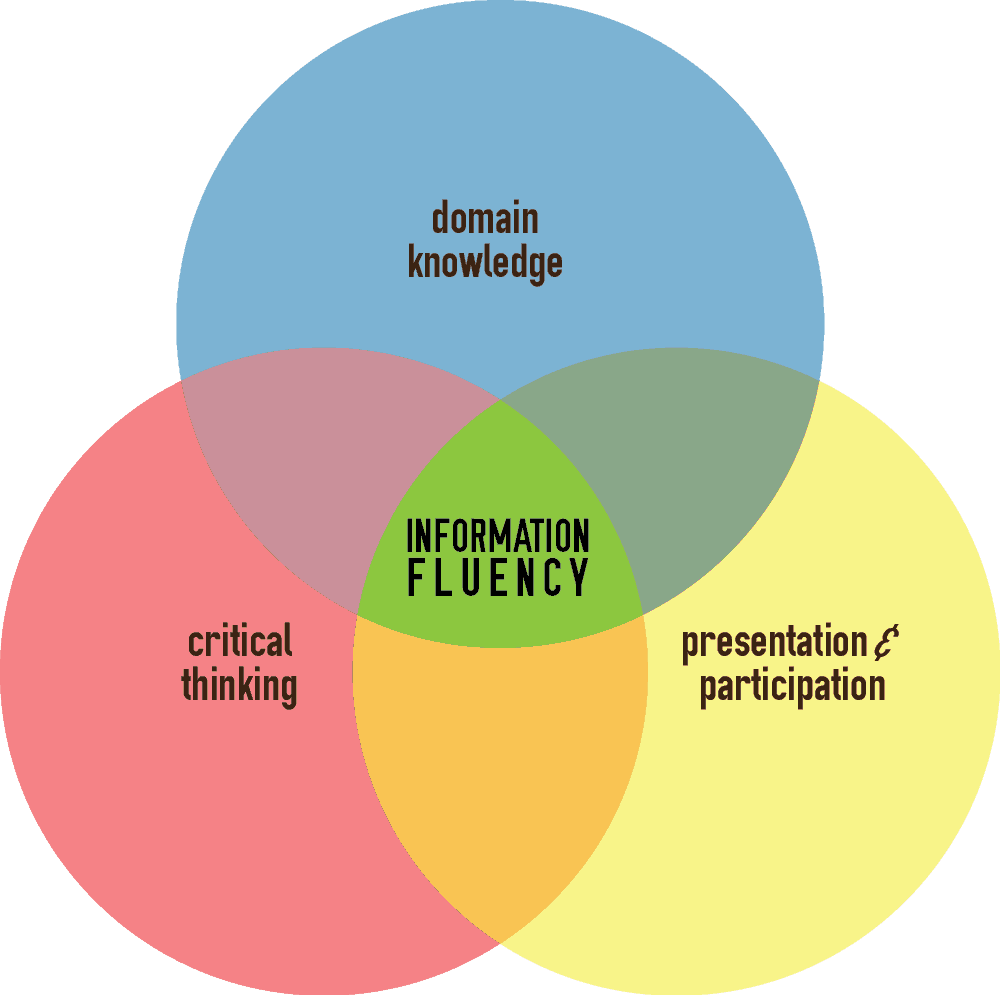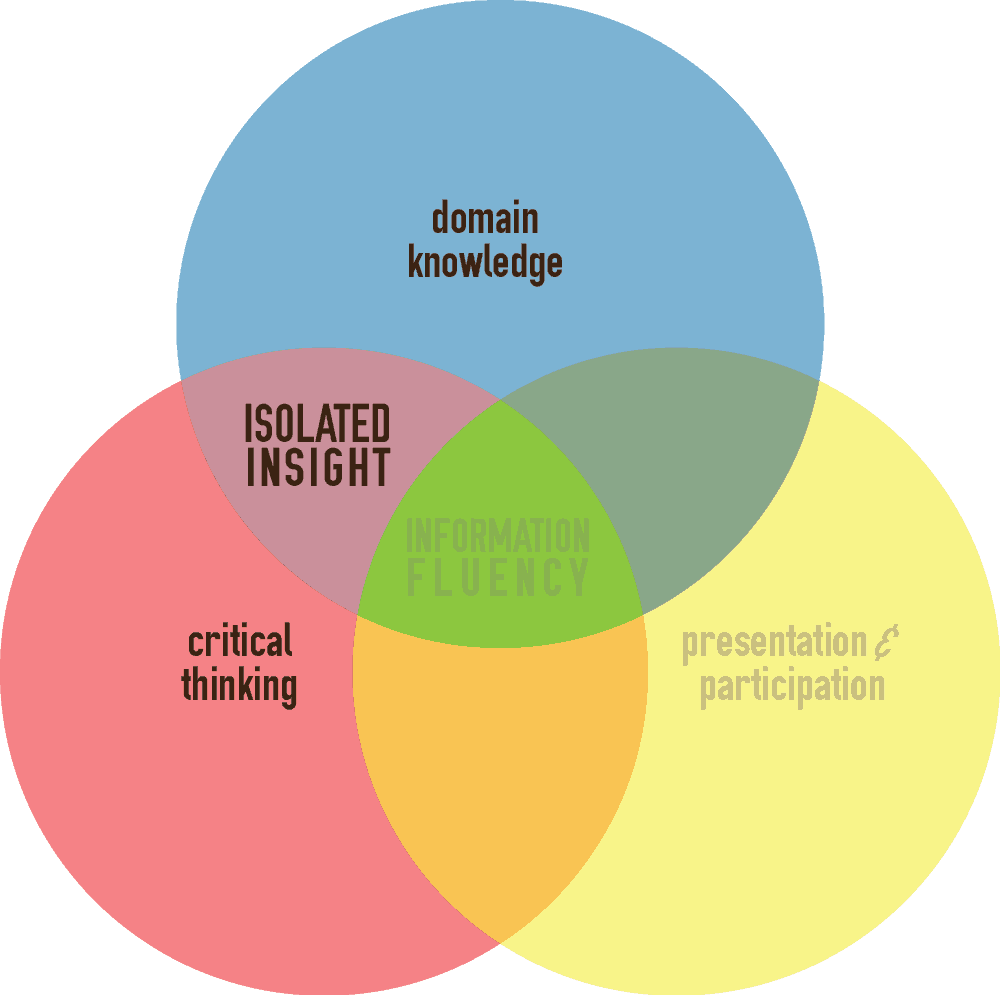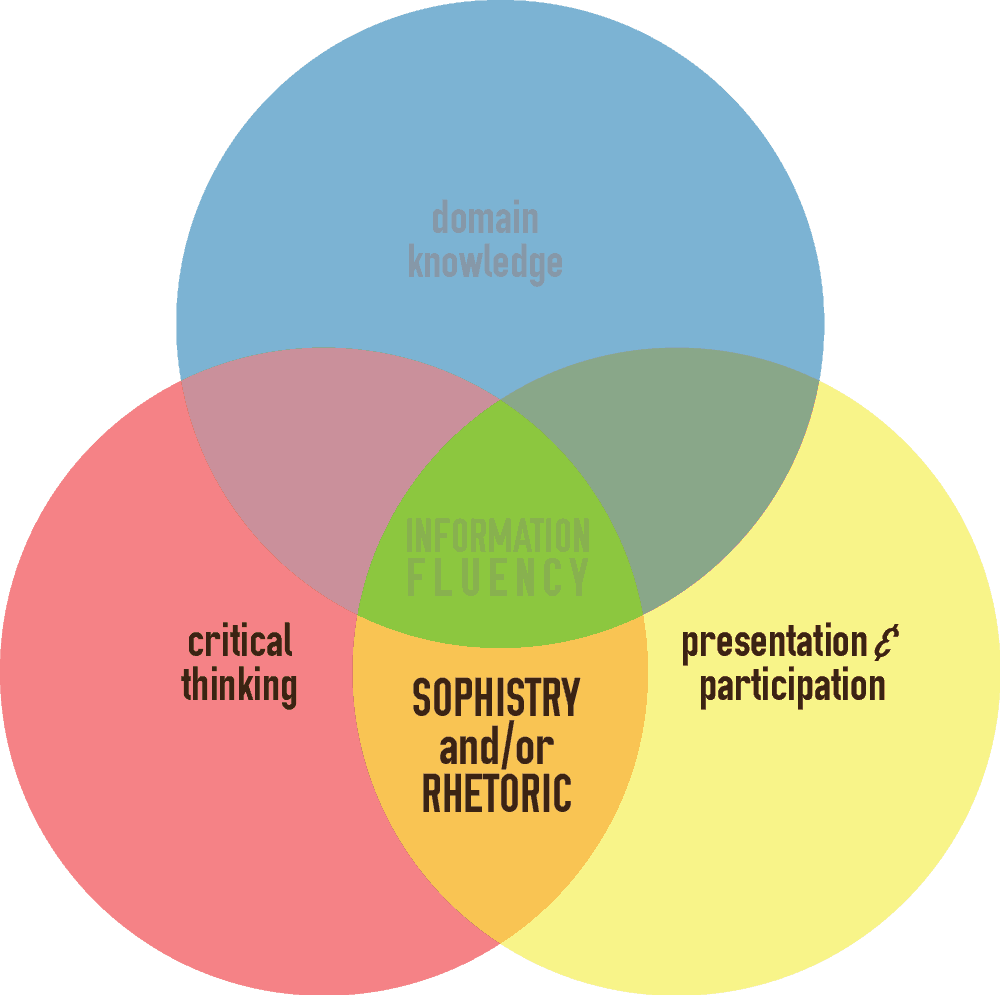Information Fluency
A framework for assessing student understanding
What is Information Fluency?
Information Fluency is a three-part lens for assessing student understanding. The information fluency triad includes domain knowledge, critical thinking, and presentation and participation — three components of learning that work together to develop and confirm students’ understanding of the subject of your course.
Domain knowledge is the specialized information about your field of expertise that you as a scholar have gathered over time through research, collaboration, and experience. When you share domain knowledge with students, it is the content piece of your course. As you expose students to information, they learn to identify reputable sources, make connections to communities of practice, and begin developing their own strategies for collecting, reflecting, connecting, and sharing what they learn. Without a firm grasp on the domain knowledge in your course, students will often resort to sophistry to cover their deficiencies.
Students who do not exhibit an ability to work the subject of your course into and between each of the three spheres of the information fluency triad may be portraying their incomplete understanding of your subject. Depending on where they fail to meet standards, information fluency can help you diagnose where the process has broken down and how you may intervene to support students.

How Can I Use Information Fluency in My Course?
The three areas of the triad work together to build Information Fluency. Any combination of just two areas results in mere information proficiency or the proverbial two-legged stool. Assess student understanding in your course by looking for incomplete information fluency, any of the two-legged stools explained below.
You can also use the concept of information fluency to develop and/or assess assignments, outcomes, and the curriculum for your course. The process of applying the concept to course design is explained further on the Learning Assessment Cycle page.
Domain Knowledge + Critical Thinking: Isolated, Untested Insight
One can have great mastery of the resources and information associated with a discipline’“ what is often referred to as “the content’’“ and strong critical thinking skills (however one defines them), but without the ability to participate in the communities in which that discipline’s knowledge and wisdom reside and to present clearly, powerfully and persuasively, the value of one’s individual insight is greatly limited. In an increasingly technologically mediated world, opportunities and demands to participate in communities of learning and practice’“ and to present what one knows (or wants to know) to others’“ are likewise increasing. Further, our understanding and position is strengthened’“ together they become resilient’“ through the processes of presentation and participation, allowing us to deepen our understanding, account for arguments and alternatives, and learn to revise and rethink.
Learn more about how to facilitate presentation and participation in your course.

Critical Thinking + Presentation/Participation: Rhetoric & Sophistry
Without an adequate and dynamic pool of disciplinary knowledge to draw from, interrogate, and build on, one’s critical thinking and presentation skills are just that: presentation skills. One might be highly polished, skilled at making a point or sending a message, and temporarily convincing, but that message won’t stand up to scrutiny. While there is much to be said for the art of rhetoric, sophistry is ultimately an incomplete and insufficient to be fully-fledged members of a community of learning or practice.

Presentation/Participation + Domain Knowledge: Reporting & Reportage
Critical thinking can be thought of as the set of skills that allows us to do more than report (in the literal sense, reporting should be an art that “no matter where one stands on the idea of objectivity” demands as much critical thinking as any other form of creative writing) information and events. The ability to interpret, question, reflect, revise, connect, synthesize, and generate new information and knowledge are only possible if we combine our existing knowledge with the activities that characterize critical thinking.
Learn more about facilitating critical thinking in your course.

Research Foundations
Fogleman, J., Niedbala, M. A., & Bedell, F. (2013). Writing and publishing in a blended learning environment to develop students’ scholarly digital ethos. Behavioral & Social Sciences Librarian, 32(2), 71-85.
Gehring, K. M., & Eastman, D. A. (2008). Information fluency for undergraduate biology majors: applications of inquiry-based learning in a developmental biology course. CBE-Life Sciences Education, 7(1), 54-63.
Facione, P.A. Critical Thinking: A Statement of Expert Consensus for Purposes of Educational Assessment and Instruction. Research Findings and Recommendations. American Philosophical Association.
Information Fluency
UAF Instructor of Online Pedagogy Owen Guthrie explains the concept of Information Fluency.
